LED Online Seminar 2018 - Working Group 11
--> Back to working group overview
Dear working group members. This is your group page and you will be completing the template gradually as we move through the seminar. Good luck and enjoy your collaboration!
Assignment 1 - Reading and Synthesizing Core Terminology
- You can read more details about this assignment here
- Readings are accessible via the resources page
Step 1: Your Landscape Democracy Manifestoes
Step 2: Define your readings
- Please add your readings selection for the terminology exercise before April 18:
A: Landscape and Democracy
Markus Herrmann: Cosgrove, Denis. (1985): Prospect, Perspective and the Evolution of the Landscape Idea. In: Transactions of the Institute of British Geographers, New Series, Vol. 10, No. 1 (1985),pp. 45-62. Published by: Blackwell Publishing on behalf of The Royal Geographical Society (with the Institute of British Geographers).
Sabine Schneider: The European Landscape Convention
Sam Nassar: The Aarhus Convention on Access to Information, Public Participation in Decision-making and Access to Justice in Environmental Matters
Seyyed mohammadmahdi hosseinikia: Kucan, Ana (2007). Constructing Landscape Conceptions. In: ECLAS (ed.). JoLA spring 2007, 30-41. Munich: Callwey.
B: Concepts of Participation
Sam Nassar: Gaventa, John: The Powerful, the Powerless, and the Experts
Markus Herrmann: Hester, Randolph (2012): Evaluating Community Design, Landscape Journal
Giulia Martina Bosi: Sanoff, Henry (2014): Multiple Views of Participatory Design, Focus
Seyyed mohammadmahdi hosseinikia: Sanoff, Henry (2014): Multiple Views of Participatory Design, Focus
Seyyed mohammadmahdi hosseinikia :Arnstein, Sherry R.(1969): A Ladder of Citizen Participation, JAIP, Vol. 35, No. 4
C: Community and Identity
Markus Herrmann: Hester, Randolph (2006): Design for Ecological Democracy, The MIT Press
Sabine Schneider: Welk Von Mossner, Alexa (2014): Cinematic Landscapes
Giulia Martina Bosi: Gafford, Farrah D. (2013): It Was a Real Village: Community Identity Formation Among Black Middle-Class Residents in Pontchartrain Park
Seyyed mohammadmahdi hosseinikia: Woodcraft, Saffron, et al.: Design for Social Sustainability: A Framework for Creating Thriving New Communities
D: Designing
Markus Herrmann: Hester, Randolph: Democratic Drawing - Techniques for Participatory Design; Hussain, Sofia, et al. (2012): Participatory Design with Marginalized People in Developing Countries: Challenges and Opportunties Experienced in a Field Study in Cambodia, International Journal of Design, Vol. 6, No. 2
Sabine Schneider: Hester, Randolph: Life, Liberty and the Pursuit of Sustainable Happiness
Sam Nassar: Smith, Nicola Dawn(2012): Design Charrette: A Vehicle for Consultation or Collaboration
Seyyed mohammadmahdi hosseinikia: Smith, Nicola Dawn(2012): Design Charrette: A Vehicle for Consultation or Collaboration
E: Communicating a Vision
Markus Herrmann: BUG project: http://www.decisionproblem.com/bug/bug2.html
Giulia Martina Bosi: Huber, Josef, Pascale Mompoint-Gaillard, and Ildikó Lázár. 2015. TASKs for democracy: 60 activities to learn and assess transversal attitudes, skills and knowledge
Steps 3 and 4: Concepts Selection and definition
- Each group member selects three relevant concepts derived from his/her readings and synthesize them/publish them on the wiki by May 9, 2018
- Group members reflect within their groups and define their chosen concepts into a shared definition to be posted on the wiki by June 6, 2018.
- Other group members will be able to comment on the definitions until June 12, 2018
- Each group will also report on their process to come to a set of shared definitions of key landscape democracy concepts on the wiki documentation until June 20, 2018
Concepts and definitions
Author 1: ...
- ......
- .......
- .......
Author 2: Sabine Schneider
- Concept 1: The role of landscape as movie settings decreases as digital effects are getting more popular. Even though some movies like Beasts oft he Southern Wild show a clear relationship to the existing landscapes to make people aware of the problems our environment it facing these days. (Welk Von Mossner, Alexa (2014): Cinematic Landscapes)
- .......
- .......
Author 3: ...
- ......
- .......
- .......
Author 4: ...
- ......
- .......
- .......
Step 5: Reflection
Step 6: Revised manifestoes
- please look again at your initial manifestoes and update them with any new aspects/prespectives you have taken up during this seminar
Assignment 2 - Your Landscape Symbols
- You can read more details about this assignment here
Landscape Symbols Author 1: Sam Nasser
Landscape Symbols Author 2: Sabine Schneider
Landscape Symbols Author 3: Markus Herrmann
The so called "Sternhochhaus / stern-skyscraper" is one of the many symbols of the city of Kassel and named after the mercedes star, that the close by Mercedes factory uses as advertisment since the 70s. The skyscraper is one of the highest in Kassel (55 m). It also symbolizes the entrance to the city coming from the University at the Holländische Platz and is also a well known meeting point (tram station "Am Stern". Furthermore it shows the industrial history of the city.
Landscape Symbols Author 4: Giulia Martina Bosi
Landscape Symbols Author 5:seyyed mohammadmahdi hosseinikia
The mausoleum of Avicenna located at the center of a Square, Hamedan, IRAN (1952). It is designed by Hooshang seyhoun and includes library, museum and beautiful landscape. Besides, the most important feature is the spindle- shaped tower, easily can be seen from vicinity. This tower generously gives spectacular view to everyone.In the past maybe for 4 decades, this tower hadn’t has any special meaning for people and the fundamental essence of it was the monument for Avicenna.
Iran (Persia) is one of the most important countries in the Middle East. It has a very long tradition of garden-making, though no one can be sure quite how long. Because it bestrides the cross-roads between the Middle East and Asia, Iran has had a turbulent history. Zoroastrianism was a religion of settlers, as opposed to nomads, and the early Zoroastrians undoubtedly had vegetable gardens. It is probable that they also made aesthetic gardens but little is known about Zoroastrian art. The earliest surviving Persian layouts are the palace estates of Passargadae and Persepolis. After the conquest of Persia by Islam, the paradise garden became established and the Islamic gardens east of Persia, in Samarkand, Afganistan and India were largely the work of Persian garden designers and craftsmen
The Azadi Tower (Borje Āzādi; "Freedom Tower"), formerly known as the Shahyad Tower (برج شهیاد Borje Ŝahyād; "Shah's Memorial Tower"), is a monument located at Azadi Square, in Tehran, Iran. It is one of the landmarks of Tehran, marking the west entrance to the city, and is part of the Azadi Cultural Complex, which also includes a museum underground. The tower is about 45 metres (148 ft) tall and is completely clad in cut marble.[1][2] It was commissioned by Mohammad Reza Pahlavi, the last Shah of Iran, to mark the 2,500th year of the foundation of the Imperial State of Iran
Assignment 3 - Role Play on Landscape Democracy "movers and shakers"
- You can read more details about this assignment here
Assignment 4 - Your Landscape Democracy Challenge
- You can read more details about this assignment here
- Each group member will specify a landscape democracy challenge in his/her environment
Landscape Democracy Challenge 1
- Give a title to your challenge
- Yourname challenge 1.jpg
caption: why did you select this case?
- Yourname challenge 2.jpg
caption: what is the issue/conflict (1)
- Yourname challenge 3.jpg
caption: what is the issue/conflict (2)
- Yourname challenge 4.jpg
caption: who are the actors?
Your references:
- ...
- ...
Landscape Democracy Challenge 2
- Give a title to your challenge
- Yourname challenge 1.jpg
caption: why did you select this case?
- Yourname challenge 2.jpg
caption: what is the issue/conflict (1)
- Yourname challenge 3.jpg
caption: what is the issue/conflict (2)
- Yourname challenge 4.jpg
caption: who are the actors?
Your references:
- ...
- ...
Landscape Democracy Challenge 3
- Give a title to your challenge
- Yourname challenge 1.jpg
caption: why did you select this case?
- Yourname challenge 2.jpg
caption: what is the issue/conflict (1)
- Yourname challenge 3.jpg
caption: what is the issue/conflict (2)
- Yourname challenge 4.jpg
caption: who are the actors?
Your references:
- ...
- ...
Landscape Democracy Challenge 4
- Give a title to your challenge
- Yourname challenge 1.jpg
caption: why did you select this case?
- Yourname challenge 2.jpg
caption: what is the issue/conflict (1)
- Yourname challenge 3.jpg
caption: what is the issue/conflict (2)
- Yourname challenge 4.jpg
caption: who are the actors?
Your references:
- ...
- ...
Landscape Democracy Challenge 5
- Give a title to your challenge
- Yourname challenge 1.jpg
caption: why did you select this case?
- Yourname challenge 2.jpg
caption: what is the issue/conflict (1)
- Yourname challenge 3.jpg
caption: what is the issue/conflict (2)
- Yourname challenge 4.jpg
caption: who are the actors?
Your references:
- ...
- ...
Assignment 5 - Your Democratic Change Process
- You can read more details about this assignment here
- After documenting and reflecting on your challenges you will continue jointly with one of these challenges and design a democratic change process
Your Democratic Change Process
- Add Title
- Your Democratic Change Process Slide1.jpg
caption: ...
- Your Democratic Change Process Slide2.jpg
caption: ...
- Your Democratic Change Process Slide3.jpg
caption: ...
- Your Democratic Change Process Slide4.jpg
caption: ...
Reflection
- ....
- ....
- ....
Conclusion:
- ....
- ....
- ....
Your references
- ...
- ...
- ...

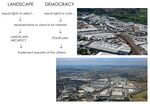
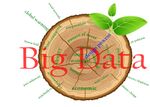



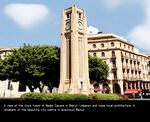






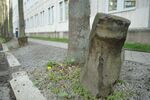




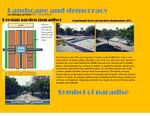
![The Azadi Tower (Borje Āzādi; "Freedom Tower"), formerly known as the Shahyad Tower (برج شهیاد Borje Ŝahyād; "Shah's Memorial Tower"), is a monument located at Azadi Square, in Tehran, Iran. It is one of the landmarks of Tehran, marking the west entrance to the city, and is part of the Azadi Cultural Complex, which also includes a museum underground. The tower is about 45 metres (148 ft) tall and is completely clad in cut marble.[1][2] It was commissioned by Mohammad Reza Pahlavi, the last Shah of Iran, to mark the 2,500th year of the foundation of the Imperial State of Iran](/images/thumb/a/a7/LED_landscape_symbol_kia_jpg3.jpg/150px-LED_landscape_symbol_kia_jpg3.jpg)